Insulation can promote many benefits, particularly when placed under a roof. It can help reduce energy costs, lessen your carbon footprint, and prevent mold growth. Now, you're wondering what could be the best insulation for the ceiling that's under the roof. We researched for you and consulted with different experts to give you the following answer.
Your insulation choice for the ceiling under a roof usually depends on the rooftop’s shape. Here are some of the options you may install for different roofs:
- Ventilated sloped ceilings: fiberglass batts and rigid foam insulation
- Unventilated sloped ceilings: fiberglass batts and spray foam insulation
- Flat ceilings: blown-in cellulose or fiberglass insulation
Take note that the type of insulation you use is only one part of the equation for your home to maintain comfortable temperatures in different seasons. Homeowners such as yourself should also follow correct installation protocols to ensure the insulating agents give you the best possible value. Keep reading as we talk about the different insulation options and how to install certain units in greater detail.
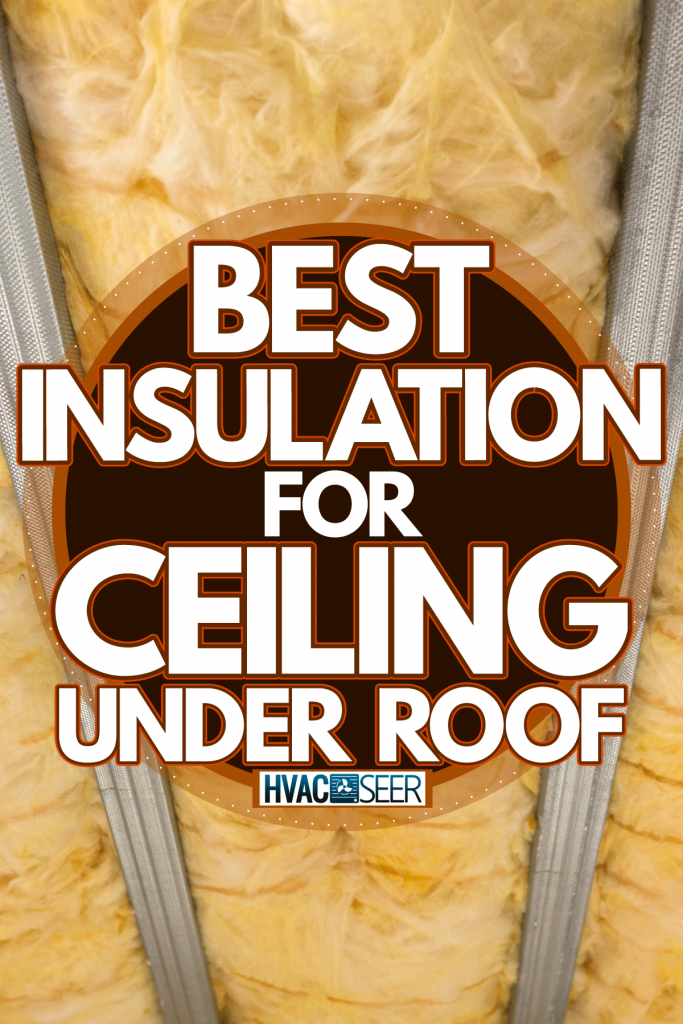
Should You Insulate The Underside Of Your Roof?
Insulating the underside of the roof can be an ideal solution to keep uncomfortable temperatures at bay. Homes with appropriate insulation under the roof can help prevent significant heat from entering the premises during summer. It can also assist in inhibiting extreme cold from permeating through the roof in the winter.
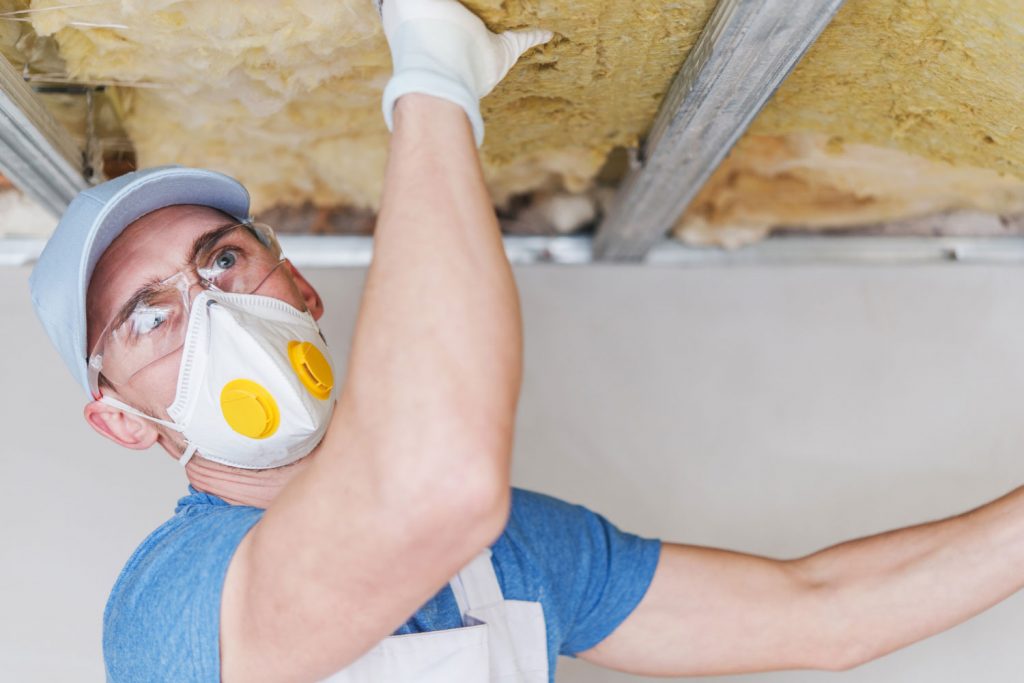
Do You Insulate The Ceiling In An Attic?
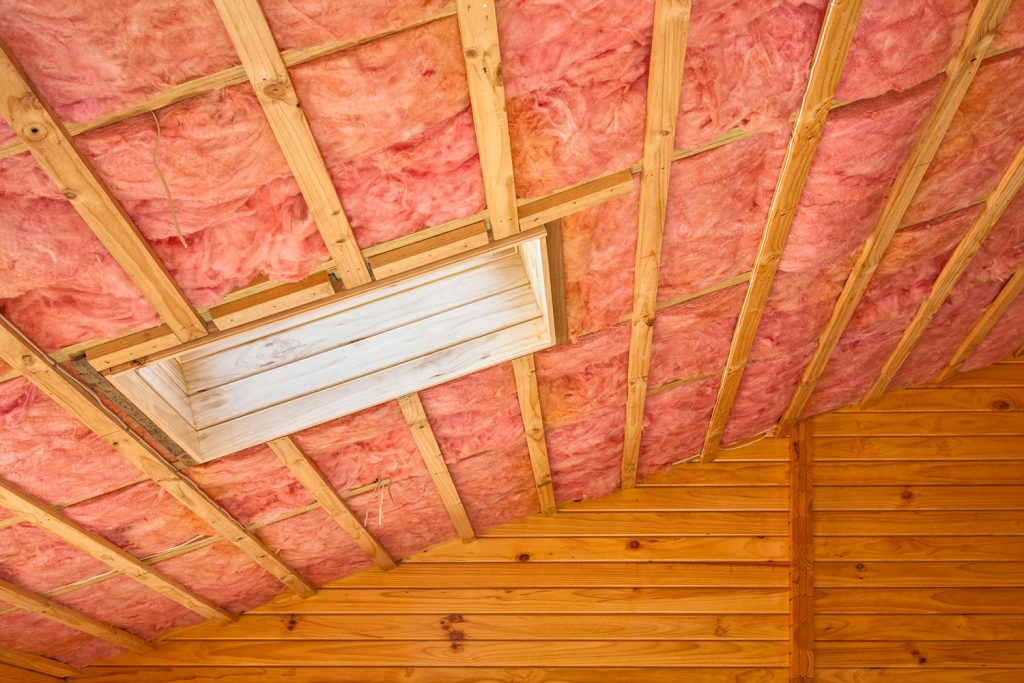
Insulating an attic can help reduce serious cold and heat from permeating through the roof, which may otherwise circulate throughout the house. However, homeowners should ponder upon certain factors before installing insulation in the attic’s ceiling.
One element is the insulation’s R-value, which is a coefficient used to indicate the material’s heat resistance. Also called thermal value, the R-value of an attic ceiling’s insulation may increase or reduce the temperature infiltrating the adjacent surface.
For example, adding R50 insulation to an attic ceiling in a property located in Hawaii might make the house more humid than before. Moreover, placing relatively thin insulation in places like the northern regions of Montana and Minnesota may not provide sufficient warmth for the winter.
The insulating material can also play a role in providing comfortable temperatures to houses. Fiberglass and other loose-fill insulating agents can be good choices for homes in certain locations, especially for places that can go below 0 degrees Fahrenheit. These options may help improve air circulation between the attic’s space and its ceiling, reducing aridness and enhancing warmth.
What Type Of Insulation Is Best For Ceilings?
Ideal insulation options often differ based on the shape of the ceiling. Some of your choices are:
Ventilated sloped ceilings
Fiberglass batts and rigid foam insulation are good selections for this roof design. However, homeowners may need to add extra framing to help deepen the installation in the rafter bays.
Unventilated sloped ceilings
A combination of spray foam and fiberglass batts can aid in reducing significant temperatures from invading the roof. Another option is to use rigid and spray foam for this roof.
Flat ceilings
Blow-in cellulose or fiberglass are often essential for this roof design. Installers should ensure that these materials have at least six inches between the insulation and the roof to maintain proper airflow within the space.
How Do You Insulate A Flat Roof Ceiling?
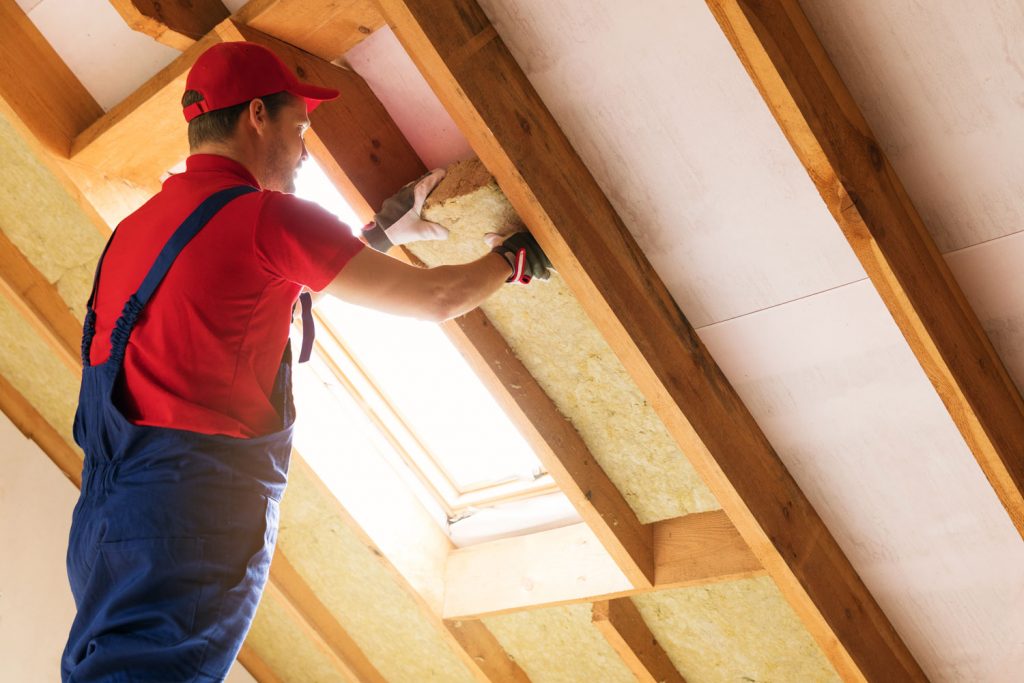
Before you begin any DIY insulating job, you need to pay attention to your safety. Procure and wear safety gear, such as glasses, gloves, and work boots. Also, wear long-sleeved clothing, particularly when working with fiberglass batts. Otherwise, small shards may cause light yet painful cuts in the skin.
Also, turn off the main power in the house to avoid getting hurt from electrical shocks when touching wires. Finally, wear a face mask or respirator because this operation can get dusty.
After following the correct safety procedures, you can proceed with this batt insulation installation project.
What You’ll Need
- Staple gun
- Utility knife
- Insulation strapping
- Stepladder
Step-by-Step Guide
- Start installing the insulation along the edges and in tight corners. Ensure that the insulation is flush with the ceiling joists’ bottoms.
- After placing the insulation in the entirety of the ceiling, secure the material with strapping. Make sure to secure the strapping with staples so it and the insulating agents won’t fall.
Cutting each batt slightly larger than each space in the ceiling can make the material fit into gaps snugly. You only need a good utility knife for this relatively small task. Plus, watch the short video below to take a quick peek at how to install insulation in a flat ceiling:
We also have a guide on how to insulate a sloped ceiling if you’re about to start that project. That post has helpful information about that topic, such as inexpensive options to insulate the attic.
Check out these Rockwool insulation boards on Amazon.
What Should I Put Between Roof And Insulation?
Enhance moisture control for the home by installing polyethylene (PE) between the roof and insulation. PE is a thermoplastic polymer generally used in plastic product development. It can also act as a vapor barrier or retarder, albeit its moisture-resistant properties usually depend on its thickness permeability rating.
Although PE can help block water from entering interiors, the material often has a low permeability rating. In turn, it can retain water for extended periods, which may still invite mold and mildew growth if left unchecked.
Homeowners should still exercise preventive measures, such as frequent insulation maintenance or the installation of vents in the roof area, to help reduce the risks of moisture-related problems further. You can also read our post on attic fans and ridge vents for more information about ceiling and roof ventilation.
Is An Air Gap Better Than Insulation?
An air cavity or gap can be a vital part of protecting certain homes from rain and wind. But it isn’t technically better than insulation, particularly when taking note of the gap’s orientation and thickness.
For example, a vertical air cavity placement with a thickness of 10 to 20 mm will have a thermal resistance of 0.14 meters squared Kelvin per Watt (m2K/W). On the other hand, a 100-mm thick insulation board may have an R-value of 4.54 m2K/W.
Homes in certain regions may not need thick insulation as these properties can do well with a reasonably thick air gap. However, houses in locations with inclement weather may want to resort to installing insulating materials than creating air gaps between their ceilings and walls.
Can You Put Insulation Directly Against The Roof?
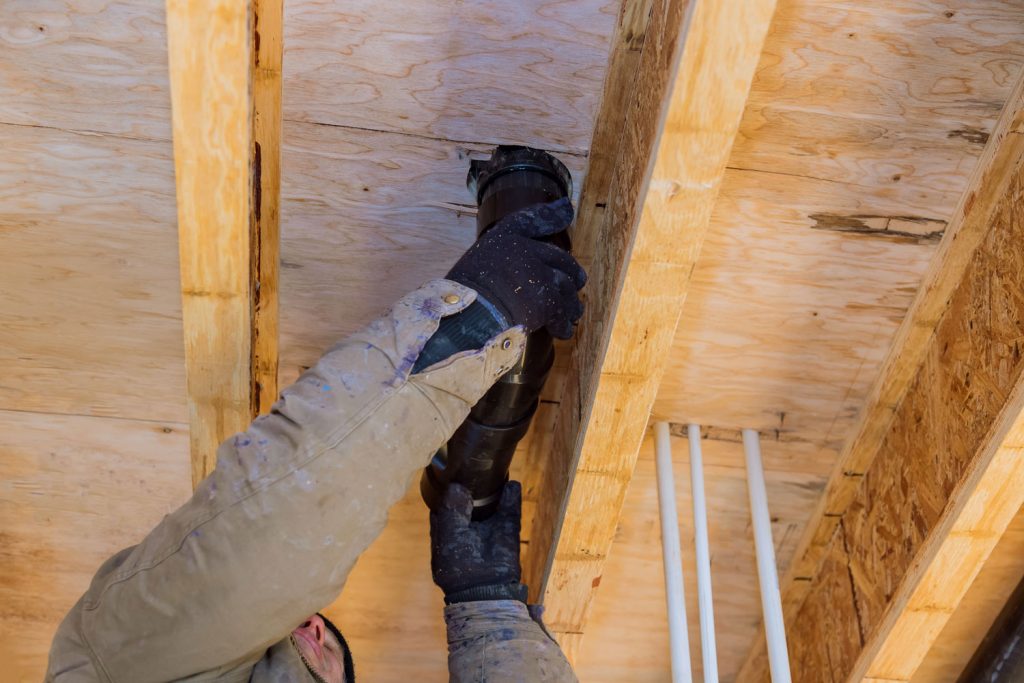
It’s not ideal to place insulation directly against the roof since it can trap moisture. But it also depends on the type of insulation used. For example, cellulose and fiberglass are often more permeable than spray-in foam. In turn, cellulose and fiberglass are less likely to encounter moisture problems than foam.
However, placing insulation direct to the roof’s surface can still increase the likelihood of the insulation trapping moisture. Still, homeowners may place countermeasures to inhibit these concerns. One solution is to place a double vapor barrier in between the insulation and the roof to increase the total R-value by about two-thirds of the original coefficient.
What Is A Good R-Value For Ceilings?
R30, R38, and R49 are relatively common options for ceiling insulation. Keep in mind that the requirements for the correct thermal resistance can still depend on the home’s location.
If you take a look at a plant hardiness zone map, you’ll find the different districts and their average climate. The map also lets you gauge the average temperature of each region.
Here’s a list of the different average R-value requirements for each zone:
- Zone 1 & 2: R30 to R49
- Zone 3: R30 to R60
- Zone 4 & 5: R38 to R60
- Zone 6 & 7: R49 to R60
Additionally, environmental factors may also adversely affect the performance of certain insulating materials despite their relatively high R-values. It's because manufacturers often test their products in an airtight environment. This controlled space generally doesn't calculate the unpredictability of changing weather.
Ultimately, you still need to set some expectations that the insulation you install on your ceiling may not work with optimal efficiency. Still, having insulation could be better than relying only on your rooftop to protect your home from extreme temperatures.
For more information about the R-value of insulation, watch the video below:
Final Words
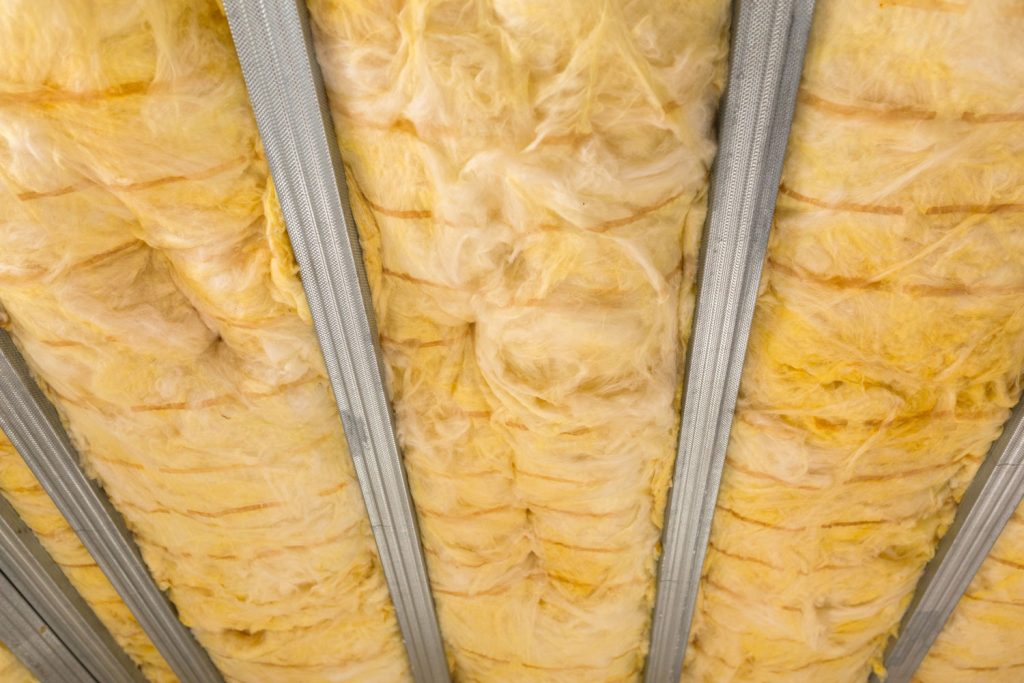
The best insulation to use on the ceiling that’s under the roof of a home generally depends on the rooftop’s design. Ventilated ceilings near the rooftop can do well with fiberglass batts and rigid foam, whereas unventilated ceilings may provide better insulation with spray foam. Flat ceilings also often do better with other insulation options, such as blown-in cellulose.

